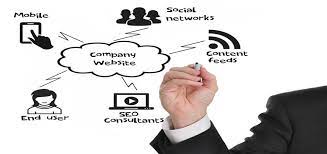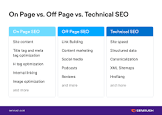Marketing: Unlocking the Power of Connection and Influence
In today’s fast-paced and competitive business landscape, marketing has become more crucial than ever. It is the engine that drives growth, builds brand awareness, and connects businesses with their target audience. But what exactly is marketing, and why is it so vital in the modern world?
At its core, marketing is the art and science of promoting products, services, or ideas to a specific group of people. It involves understanding customer needs, creating compelling messages, and delivering them through various channels to generate interest, desire, and ultimately drive action.
One of the key pillars of successful marketing is building connections. In an era where consumers are bombarded with countless advertising messages daily, it’s essential to stand out by forging genuine connections with your audience. Effective marketing goes beyond simply selling; it focuses on building trust, understanding customer pain points, and providing solutions that genuinely meet their needs.
Moreover, marketing serves as a powerful tool for influence. By leveraging persuasive techniques and compelling storytelling, marketers have the ability to shape opinions, change behaviors, and inspire action. From memorable advertisements that tug at our heartstrings to thought-provoking social media campaigns that spark conversations worldwide – marketing has the power to create lasting impacts.
In today’s digital age, online marketing has taken center stage. With billions of people connected through social media platforms and search engines at their fingertips, businesses have unprecedented opportunities to reach their target audience directly. Digital marketing encompasses a wide range of strategies such as search engine optimization (SEO), pay-per-click (PPC) advertising, content marketing, email campaigns, social media engagement – all aimed at capturing attention in a crowded online space.
However powerful digital marketing may be, traditional forms of marketing still hold significant value. Television ads can captivate millions during prime time slots; print advertisements can leave a lasting impression in glossy magazines or newspapers; billboards can catch commuters’ attention during rush hour. The key lies in finding the right mix of channels to reach your target audience effectively.
In an ever-evolving marketing landscape, staying ahead requires continuous adaptation and innovation. Marketers must stay updated with the latest trends, technologies, and consumer behaviors. Data analytics plays a crucial role in understanding customer preferences, measuring campaign effectiveness, and making informed decisions that drive results.
Ultimately, marketing is about connecting people with products or services that enhance their lives. It’s about creating value, solving problems, and building relationships that stand the test of time. By harnessing the power of marketing, businesses can thrive in an increasingly competitive world and make a lasting impact on their customers.
So whether you’re a small startup or a multinational corporation, investing in marketing is not just an option – it’s a necessity. Embrace the power of connection and influence; unlock the potential of marketing to propel your business forward into a future full of possibilities.
Frequently Asked Questions: Marketing Explained and 7 P’s Demystified (English UK)
- What are the 7 concepts of marketing?
- What is marketing and how it works?
- What do you mean by marketing?
- What is marketing why?
- What is a meant by marketing?
- What do you mean marketing?
- What is marketing and example?
- What are 7 P’s of marketing?
What are the 7 concepts of marketing?
The 7 concepts of marketing are core principles that guide businesses in their marketing strategies and practices. These concepts provide a framework for understanding how to effectively reach and engage with target audiences. Here are the seven key concepts:
- Product Orientation: This concept focuses on the quality and features of a product or service. It emphasizes creating superior products and improving them over time to meet customer needs and desires.
- Production Orientation: This concept centers around maximizing production efficiency and reducing costs. It assumes that consumers prefer affordable, widely available products, so companies focus on mass production and distribution.
- Sales Orientation: With this concept, the primary goal is to sell as much as possible. Companies adopt aggressive sales techniques, such as advertising and promotions, to persuade customers to buy their products or services.
- Marketing Orientation: This concept shifts the focus from selling to understanding customer needs and wants. Companies conduct market research, gather insights about their target audience, and develop products or services that meet those specific needs.
- Societal Marketing Orientation: In addition to meeting customer needs, this concept emphasizes considering the broader societal impact of marketing activities. Companies take into account ethical, social, and environmental factors when developing marketing strategies.
- Relationship Marketing: This concept recognizes the value of building long-term relationships with customers rather than focusing solely on one-time transactions. It emphasizes customer loyalty, satisfaction, retention, and repeat business through personalized interactions.
- Holistic Marketing: Holistic marketing takes an integrated approach by considering all aspects of marketing simultaneously – internal marketing (employee engagement), integrated marketing (consistent messaging across channels), relationship marketing (customer-centric approach), and performance marketing (measuring results).
These concepts help businesses align their strategies with consumer expectations, market dynamics, ethical considerations, and long-term sustainability goals. By understanding these principles, companies can create effective marketing campaigns that resonate with their target audience while delivering value and achieving business objectives.
What is marketing and how it works?
Marketing is the process of promoting and selling products, services, or ideas to a target audience. It involves understanding customer needs, creating compelling messages, and delivering them through various channels to generate interest, desire, and ultimately drive action.
The key components of marketing include:
- Market Research: This involves gathering and analyzing data about the target market, including customer demographics, preferences, behaviors, and competitors. Market research helps businesses understand their audience and identify opportunities for growth.
- Segmentation and Targeting: Based on market research, businesses divide the larger market into smaller segments with similar characteristics. They then select specific target segments that align with their product or service offerings and develop tailored marketing strategies to reach those segments effectively.
- Branding: Branding encompasses creating a unique identity for a product or service that sets it apart from competitors. It involves developing a brand name, logo, tagline, and visual elements that reflect the values and personality of the business.
- Product Development: Marketing works closely with product development teams to ensure that products or services meet customer needs and preferences. Marketers provide insights on market demands and trends to guide product enhancements or new product launches.
- Pricing Strategy: Marketers determine appropriate pricing strategies based on factors such as production costs, competitor pricing, perceived value by customers, and overall business objectives. Pricing decisions can impact consumer perception of value and influence purchasing decisions.
- Promotion: This is where marketers create compelling messages about products or services to attract attention and generate interest among the target audience. Promotion tactics can include advertising through various channels such as television, radio, print media, digital platforms (websites, social media), content marketing (blogs/articles), public relations activities (press releases), events/exhibitions participation, etc.
- Distribution Channels: Marketers decide how products or services will be made available to customers by selecting appropriate distribution channels such as retail stores, online platforms/marketplaces, direct sales, or partnerships with distributors. The goal is to ensure that products reach the target audience efficiently.
- Customer Relationship Management: Building and maintaining strong relationships with customers is essential for long-term success. Marketers employ strategies to engage and retain customers through personalized communication, loyalty programs, customer support, and feedback mechanisms.
- Evaluation and Analysis: Marketing efforts are continually monitored and evaluated to measure their effectiveness. Key performance indicators (KPIs) such as sales revenue, customer acquisition costs, conversion rates, website traffic, social media engagement, etc., are tracked to assess the impact of marketing activities. This data helps marketers refine their strategies and make informed decisions for future campaigns.
Marketing is a dynamic field that evolves with changing consumer behaviors and technological advancements. Successful marketing requires a deep understanding of the target audience, effective communication strategies, creativity in messaging and positioning, and continuous adaptation based on market trends and feedback.
What do you mean by marketing?
Marketing refers to the activities and processes involved in promoting, selling, and distributing products or services. It encompasses a range of strategies and techniques that businesses use to connect with their target audience, create awareness about their offerings, and ultimately drive customer engagement and sales.
Marketing involves understanding consumer needs and preferences, conducting market research, developing effective messaging and branding, selecting appropriate communication channels, and implementing promotional campaigns. It aims to influence consumer behavior by highlighting the value and benefits of a product or service and persuading potential customers to make a purchase or take a desired action.
In essence, marketing is about building relationships between businesses and consumers. It goes beyond simply advertising products; it involves creating connections, establishing trust, and delivering value to customers. Effective marketing strategies take into account factors such as market segmentation, target audience analysis, competitive positioning, pricing strategies, distribution channels, and promotional tactics.
Marketing can be carried out through various channels including traditional media such as television, radio, print ads, billboards, as well as digital platforms like websites, social media networks, email campaigns, search engine optimization (SEO), pay-per-click (PPC) advertising, content marketing, influencer partnerships, and more.
The goal of marketing is to generate awareness about a brand or product/service offering; attract potential customers; engage them through compelling messaging; build brand loyalty; encourage repeat purchases; foster positive word-of-mouth referrals; and ultimately drive business growth.
In summary, marketing is a multifaceted discipline that encompasses all the activities involved in promoting products or services. Its primary objective is to connect businesses with their target audience by effectively communicating the value proposition of their offerings in order to achieve business objectives such as sales growth and brand recognition.
What is marketing why?
Marketing is a fundamental aspect of business that involves promoting and selling products, services, or ideas to a target audience. It plays a crucial role in the success and growth of any organization. Here’s why marketing is essential:
- Building Awareness: Marketing creates awareness about your brand, products, or services among your target audience. It helps potential customers discover and recognize your offerings, increasing the chances of attracting new customers.
- Generating Demand: Effective marketing strategies generate demand for your products or services. By showcasing the benefits and unique features of what you offer, marketing helps create desire and interest among consumers, prompting them to consider purchasing from you.
- Connecting with Customers: Marketing enables businesses to establish connections with their customers. Through various channels such as social media, email campaigns, or content marketing, you can engage with your audience directly, build relationships, and foster customer loyalty.
- Understanding Customer Needs: Marketing involves market research and gathering insights about customer preferences and behaviors. This information helps businesses understand their target audience better, identify their needs, and tailor their products or services accordingly.
- Gaining Competitive Advantage: In competitive markets, effective marketing strategies can give businesses an edge over their competitors. By highlighting unique selling propositions (USPs) and differentiating themselves from others in the market, companies can position themselves as the preferred choice for customers.
- Increasing Sales and Revenue: The ultimate goal of marketing is to drive sales and generate revenue for a business. By implementing targeted promotional activities that resonate with the target audience’s needs and desires, marketing efforts can lead to increased sales figures and business growth.
- Adapting to Changing Markets: Markets are constantly evolving due to changing consumer trends, technological advancements, or economic shifts. Marketing allows businesses to stay agile by monitoring market changes and adjusting their strategies accordingly to remain relevant in the eyes of consumers.
- Enhancing Brand Reputation: A strong brand reputation is vital for long-term success. Marketing efforts, such as effective branding, advertising, and public relations, help shape the perception of your brand in the minds of consumers, building trust and credibility.
- Expanding Market Reach: Marketing enables businesses to expand their reach beyond their local market. With digital marketing channels, companies can target customers globally and tap into new markets without geographical limitations.
- Driving Innovation: Marketing encourages businesses to innovate and develop new products or services that meet customer needs or solve their problems. By understanding market demands and consumer feedback, companies can continuously improve their offerings and stay ahead of the competition.
In summary, marketing is essential because it drives business growth, builds brand awareness and reputation, connects with customers, adapts to changing markets, and ultimately leads to increased sales and revenue. It is a strategic function that helps businesses thrive in a competitive world by effectively reaching and engaging with their target audience.
What is a meant by marketing?
Marketing refers to the activities and processes involved in promoting, advertising, and selling products or services. It encompasses a wide range of strategies and techniques aimed at reaching a target audience, generating interest, creating brand awareness, and ultimately driving profitable customer action.
Marketing involves understanding consumer needs and preferences, conducting market research, developing effective messaging and communication strategies, identifying appropriate channels for reaching the target audience, and continuously evaluating and adjusting marketing efforts based on data and feedback.
The goal of marketing is to connect businesses with customers by delivering value through products or services that fulfill their needs or desires. It involves building relationships, establishing trust, and influencing customer behavior through persuasive communication.
Marketing can take various forms, including traditional methods such as print advertisements, television commercials, billboards, direct mail campaigns, as well as digital marketing techniques like search engine optimization (SEO), pay-per-click (PPC) advertising, content marketing, social media engagement, email marketing, influencer partnerships, and more.
In essence, marketing is about creating awareness about a product or service in order to generate demand and drive sales. It plays a crucial role in helping businesses reach their target market effectively and achieve their overall business objectives.
What do you mean marketing?
Marketing refers to the activities and strategies undertaken by businesses or organizations to promote their products, services, or ideas. It involves understanding customer needs, identifying target markets, creating compelling messages, and utilizing various channels to reach and engage with the intended audience.
Marketing encompasses a wide range of activities, including market research, advertising, branding, public relations, sales promotions, social media marketing, content creation, and more. The goal of marketing is to build awareness and interest in a product or service, generate leads or sales, and ultimately foster long-term customer relationships.
Effective marketing involves understanding consumer behavior and preferences to tailor messaging and offerings accordingly. It requires creativity in developing compelling campaigns that capture attention and resonate with the target audience. Additionally, marketing relies on data analysis to measure the effectiveness of strategies and make informed decisions for future initiatives.
In essence, marketing is about connecting businesses with their customers by delivering value and meeting their needs. It plays a vital role in driving business growth, building brand reputation, influencing consumer perceptions, and maintaining a competitive edge in the marketplace.
What is marketing and example?
Marketing is the process of promoting and selling products, services, or ideas to a specific target audience. It involves various strategies and tactics aimed at creating awareness, generating interest, and ultimately driving customer action.
One example of marketing is a television commercial for a new smartphone. The commercial showcases the phone’s sleek design, advanced features, and user-friendly interface. It highlights how the phone can improve people’s lives by making communication easier, capturing memorable moments with its high-quality camera, and providing access to a wide range of useful applications.
The purpose of this marketing campaign is to create awareness and generate interest among potential customers. By showcasing the unique selling points of the smartphone in an engaging way, the company aims to persuade viewers to consider purchasing the product. The advertisement may be aired during popular TV shows or sports events to reach a wide audience.
In addition to traditional advertising methods like TV commercials, marketing can also include digital strategies such as social media campaigns. For instance, a clothing brand may create engaging content on Instagram featuring influencers wearing their latest collection. By leveraging the influencers’ reach and credibility, they aim to attract their target audience and encourage them to explore their products further.
These examples demonstrate how marketing utilizes different channels and techniques to connect with consumers, create desire for products or services, and ultimately drive sales or desired actions.
What are 7 P’s of marketing?
The 7 P’s of marketing is a framework that helps businesses analyze and develop their marketing strategy. These elements encompass various aspects of the marketing mix, providing a comprehensive approach to planning and executing marketing activities. The 7 P’s are as follows:
- Product: This refers to the tangible or intangible offering that a business provides to its customers. It includes features, quality, packaging, branding, and any additional services associated with the product.
- Price: Pricing involves determining the value of the product or service and setting a price that aligns with market demand and competition. Factors such as cost, perceived value, pricing strategies, discounts, and payment options are considered in this element.
- Place: Place refers to the distribution channels through which products or services reach customers. It involves decisions related to selecting appropriate sales channels, retail locations, online platforms, logistics, warehousing, and inventory management.
- Promotion: Promotion encompasses all activities aimed at communicating and promoting the product or service to the target audience. This includes advertising campaigns, public relations efforts, sales promotions, direct marketing tactics, social media engagement, and other promotional strategies.
- People: People refer to both employees within the organization and customers who interact with the business directly or indirectly. It involves hiring and training competent staff who can deliver excellent customer service and create positive brand experiences.
- Process: Process refers to the systems and procedures involved in delivering products or services to customers effectively. It includes order processing, customer support mechanisms, after-sales service processes, supply chain management procedures – all aimed at ensuring smooth operations.
- Physical Evidence: Physical evidence relates to the tangible elements that contribute to a customer’s perception of a product or service. This can include physical facilities (such as retail stores or office spaces), packaging materials, website design/layout, signage – anything that influences how customers perceive a brand.
By considering these 7 P’s holistically, businesses can develop a well-rounded marketing strategy that takes into account various factors influencing their target market. This framework helps ensure that all aspects of the marketing mix are aligned and integrated, leading to more effective and impactful marketing campaigns.



